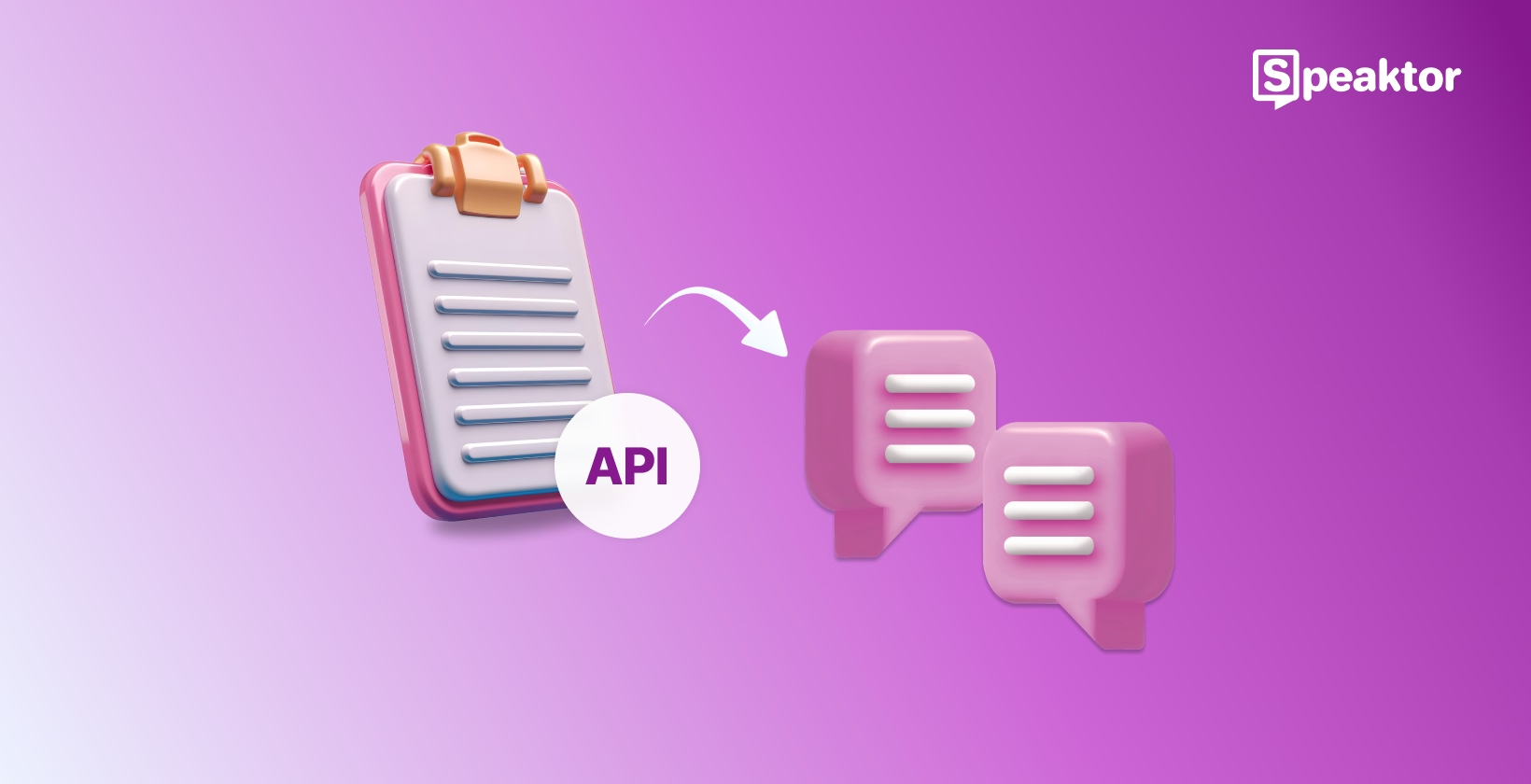
Best Text to Speech APIs in 2025
Turn Texts into Speech and Read Aloud
Turn Texts into Speech and Read Aloud
Nowadays, many consumers prefer audio-based content more than text-based content. They believe that consuming information through audio-based content helps them save time and effort. This is true, especially if you have a busy schedule. Thus, the importance of text-to-speech APIs is increasing.
However, choosing the right TTS API providers is no simple task. You need to find something that perfectly aligns with your needs. Choosing an irrelevant one will drain your time and resources. This article will inform you about the best AI text-to-speech APIs. You will know their features, which will help you make a more informed decision.
Understanding Text-to-Speech APIs
Text-to-speech APIs convert written text into spoken audio to make content more accessible. But despite your needs, choosing the right TTS APIs need careful consideration. You need to understand specific parameters to ensure the speech synthesis API is suitable for your needs.
Key Features to Consider
Neural TTS APIs offer natural-sounding voices and support multiple languages. Various customization options allow you to fine-tune the audio output. For example, you can customize the speed and tone to make the audio more consistent.
On top of that, it should generate output in various formats such as MP3 or WAV. If you are looking for scalability, you need an API that can handle large volumes of text without compromising. You are good to go if you do not face any navigational problems.
Technical Requirements
Before selecting a TTS API, ensure it supports your preferred programming languages and framework. You also need to choose between a cloud-based and on-premise solution. Your choice will have a significant impact on data security and deployment flexibility.
You should also pay attention to API rate limits. You need to know how many requests you can send per second. Failure to consider this may cause problems when using the TTS APIs during peak hours. Furthermore, ensure the latency and response time are up to the mark.
Integration Considerations
Successful integration depends on how easily the API integrates with your existing systems. This is why you should look for well-documented SDKs and simple implementation processes. These two aspects will drastically reduce development time.
It must also be compatible with your applications to avoid workflow disruptions. You should also pay close attention to security and compliance. You cannot compromise its security if you are handling sensitive and confidential data.
Evaluation Criteria to Remember
You know how text-to-speech APIs work. However, that does not mean you can choose the best tools easily. You need to know some specific evaluation criteria for this process. Those will matter a lot, especially when looking for a reliable option.
- Voice Quality Metrics: The voice quality should be accurate and top-notch without any mistakes.
- API Performance Standards: The API performance should be flawless for better turnaround time.
- Pricing Models: The pricing structure should be cost-effective so you do not break the bank.
- Developer Support: Good documentation, SDKs, support, and error tools simplify integration.

Voice Quality Metrics
The effectiveness of a TTS API depends on how natural and expressive the generated speech sounds. Hence, you must consider various factors such as pronunciation and intonation accuracy. The API should be capable of handling complex sentences that impact the listening experience.
Moreover, the API should support multiple accents and languages for further ease of use. The more emotional tones you add, the better audio files you will produce. You can also test different voice options to see which makes visually disabled people more comfortable. NCBI revealed that around 230 million worldwide population have vision impairment.
API Performance Standards
Reliable performance is critical, especially for real-time applications. Remember that response time and processing speed are key deciding factors. You need to ensure the text-to-speech APIs can handle large-scale projects. Low-latency speech generation is essential for interactive applications, such as voice assistants or automated customer support. Moreover, the voice generation API must remain functional without unexpected downtime.
Pricing Models
TTS APIs follow different pricing structures. You will get various options if you like pay-per-use or a monthly pricing model. Additionally, some providers offer free usage limits, but costs can increase with higher request volumes.
So, you must choose the perfect pricing model based on your intended usage. This way, you can avoid unexpected expenses. You also need to consider if you are bound to pay an additional amount to use advanced features. You need to balance the cost-effectiveness with the features you get.
Developer Support
Proper documentation and SDKs can streamline the overall integration process. Thanks to the active developer community and forums, you can resolve your issues quickly. Moreover, responsive customer support improves troubleshooting and issue resolution.
You can reduce development time when the APIs have well-structured error messages and debugging tools. GitHub revealed that the debugging software market will grow at a CAGR of 13.9%. Keep in mind that you need to have access to dedicated technical support or enterprise-level assistance. This is true, mainly if your application relies heavily on voice capabilities.
Top 6 Text-to-Speech APIs Compared
Choosing the correct text-to-speech APIs can become too time-consuming, especially if you are new in the market. Not all tools are reliable, and some of them even feature hidden pricing plans. So, you need to be cautious when choosing voice API platforms. Here is the text-to-speech API comparison you should know.
- Speaktor: Speaktor TTS API can generate AI voiceovers in 50+ languages with higher accuracy.
- ElevenLabs: ElevenLabs AI Voice API offers realistic, expressive voices with advanced speech synthesis.
- Listnr: The AI Voice API from Listnr offers over 1,000 realistic voices in 142 languages
- Lovo: Lovo AI Voice API offers high-quality text-to-speech capabilities with natural-sounding voices.
- Descript: Descript TTS API offers high-quality voice synthesis with lifelike voice cloning.
- Murf AI: Murf API offers high-quality, natural-sounding voices with support for over 120 voices across 20+ languages.
Tools | Features | Target Users | Pricing |
|---|---|---|---|
Speaktor | Text-to-speech, multi-language support | Professionals, content creators, educators, lecturers | Free trial, paid plans |
ElevenLabs | Realistic voice generation, customization options | Writers, podcasters | Subscription-based |
Listnr | AI voice generator, real-time transcription | Marketing teams, podcasters | Free plan, subscription |
Lovo | High-quality voiceovers, multilingual voices | Advertisers, YouTubers | Free trial, subscription |
Descript | Video editing, speech-to-text, Overdub | Content creators, podcasters | Free plan, subscription |
Murf AI | AI voiceover, custom voice models | Enterprises, podcasters | Subscription-based |
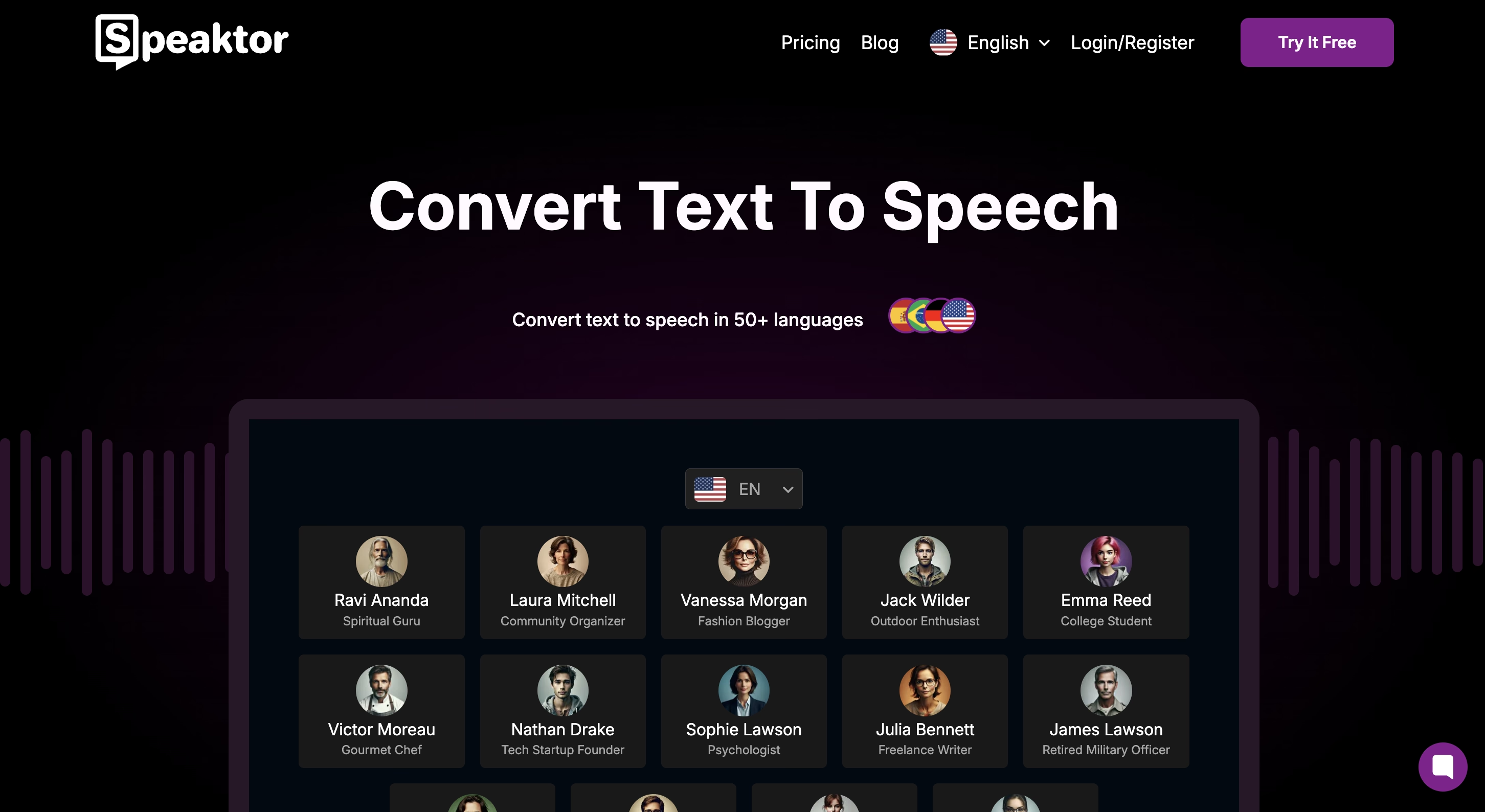
1. Speaktor
Speaktor is one of the best text-to-speech APIs you can choose. It can convert your text to audio in 50+ languages. Therefore, you can use this platform when you are planning to target global audiences. Speaktor will also ensure highly accurate voiceovers, unlike many other platforms. Moreover, it runs on powerful AI algorithms. It can create detailed audio files within minutes.
The audio files will also have various customization options. You can customize anything even after getting the output. Its faster turnaround time will ensure more efficiency and productivity. The API will also let you upload PDF, TXT, and Word files. Even if you have the source file in other formats, you can simply copy and paste it. Furthermore, you can download the voiceovers in MP3 file format.
Key Features
- Language Support: Speaktor supports 50+ languages. So, you can easily create voiceovers in any language you want. There will be no language barriers, especially when communicating with global audiences.
- Simple Dashboard: Speaktor has a simple dashboard. It is highly beginner-friendly and filled with eye-catching designs. Just create an account and use Speaktor without any learning curve.
- File Management: Speaktor will store all your files in one location. Thus, you can find anything easily without wasting too much time.
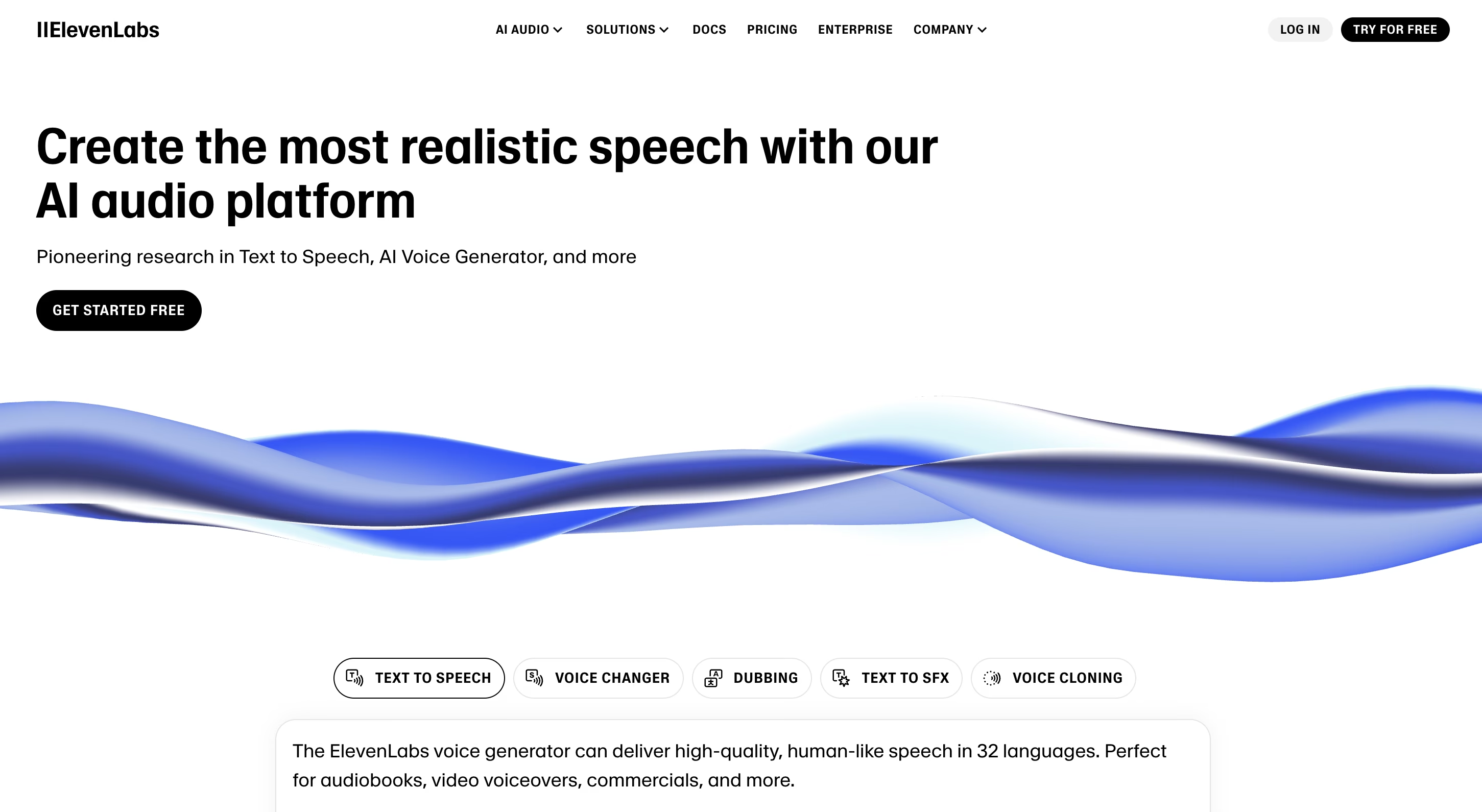
2. ElevenLabs
ElevenLabs cloud text-to-speech services can generate highly realistic and expressive voices. From audiobooks and podcasts to customer service automation, you can use it anywhere. This API offers advanced speech synthesis with natural intonation and emotional depth.
Moreover, ElevenLabs provides an extensive range of voice models. These are highly effective in mimicking human-like speech patterns with precision. You can also customize the speech and speaking tone for further accessibility. However, the learning curve is too steep for beginners.
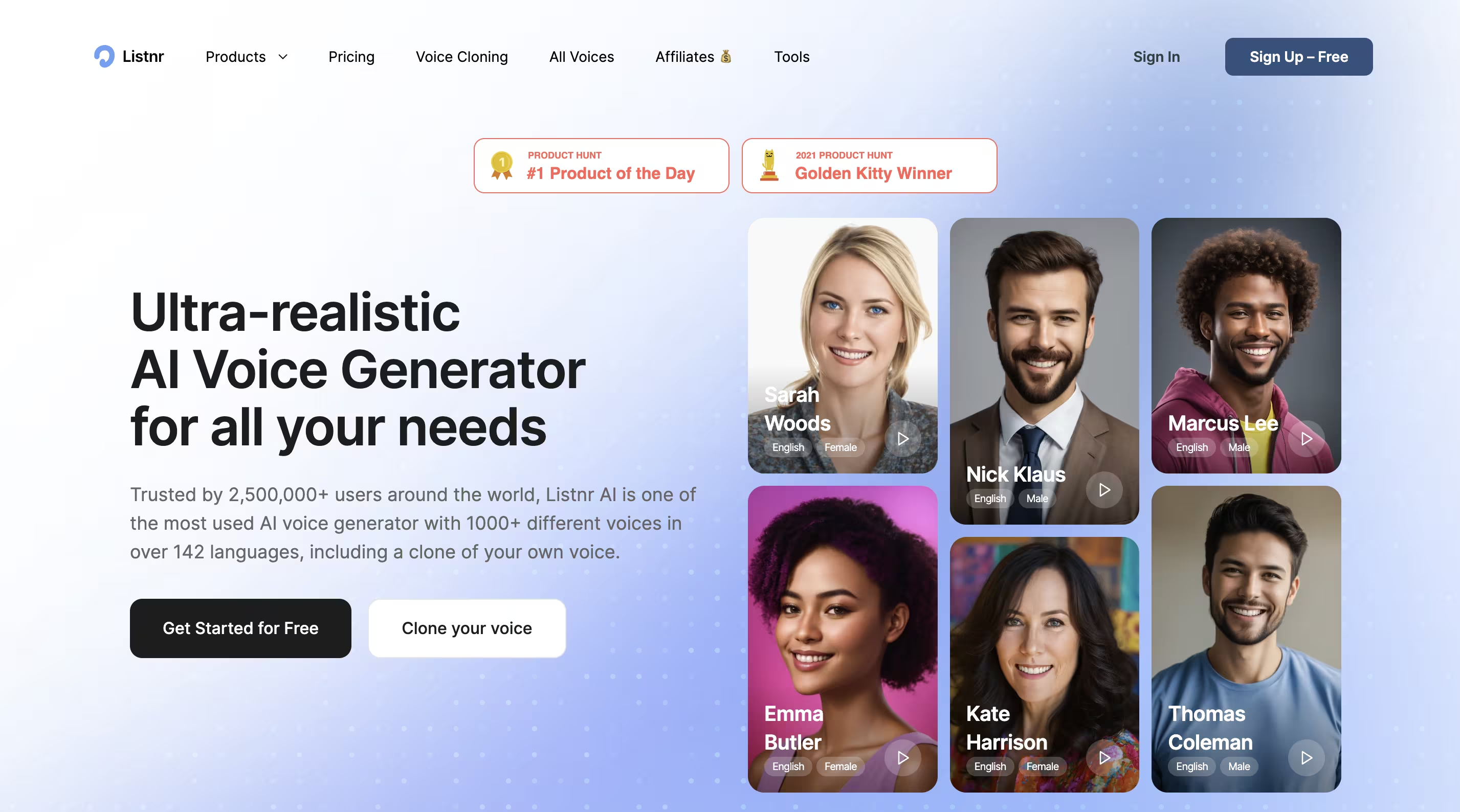
3. Listnr
Listnr AI's Voice API is a powerful tool. You can use it to integrate realistic text-to-speech capabilities into their applications. As it supports over 1,000 voices in 142 languages, you can make your audio files more accessible. Not to mention, you can promote your content to global audiences.
The natural language APIs API also provides advanced features, such as adjusting pronunciation and voice style. Thus, if you need more customization, Listnr can effectively fulfill your demands. However, many users have complained about increased downtime.
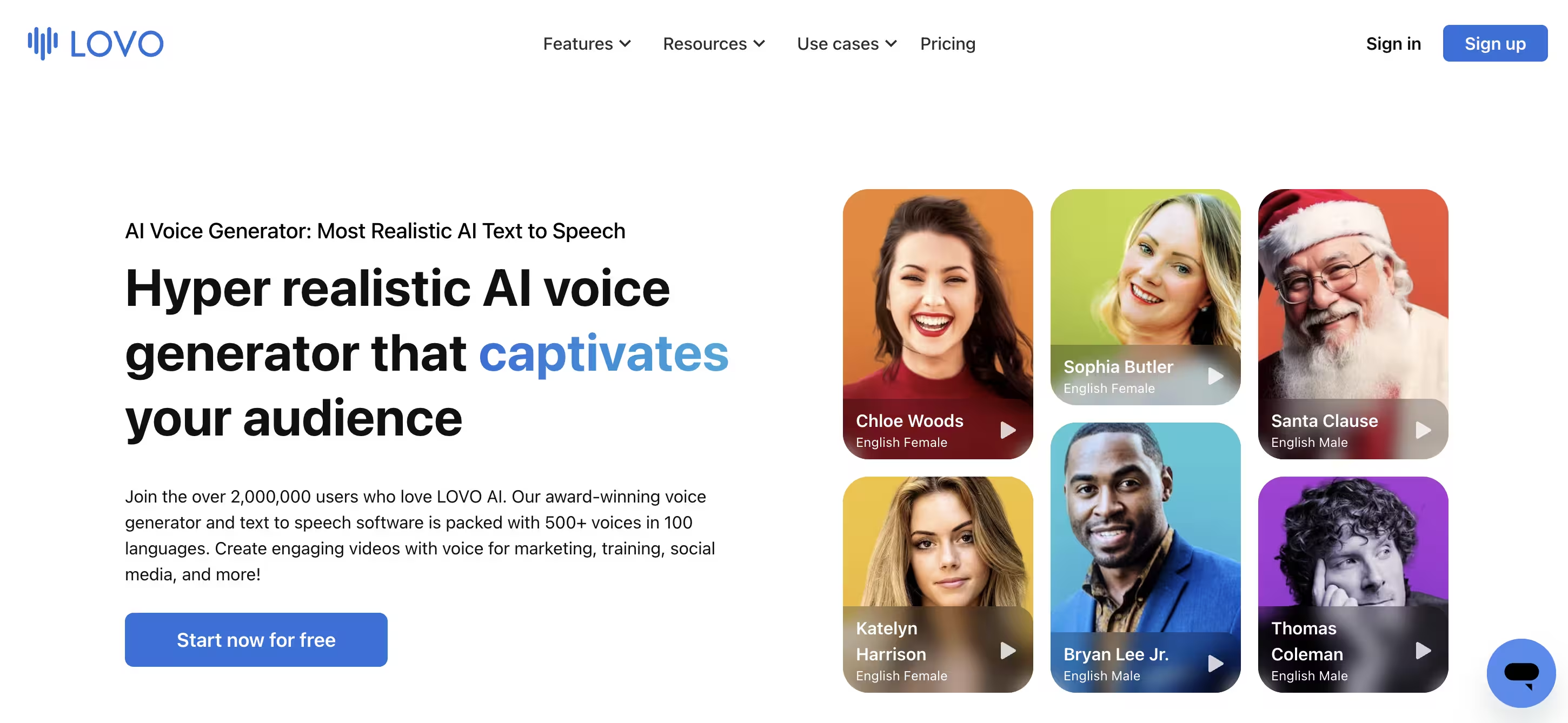
4. Lovo
Lovo AI Voice API provides high-quality text-to-speech capabilities. You will receive higher output quality thanks to its AI voice synthesis feature. You will like its natural-sounding voices and multilingual support. Moreover, you can access advanced controls for free.
The API has a fast response time for low-latency speech generation. Even during peak times, there will be no operational downtime. Moreover, its pricing models are highly flexible. However, remember that Lovo is comparatively more expensive than the other platforms.
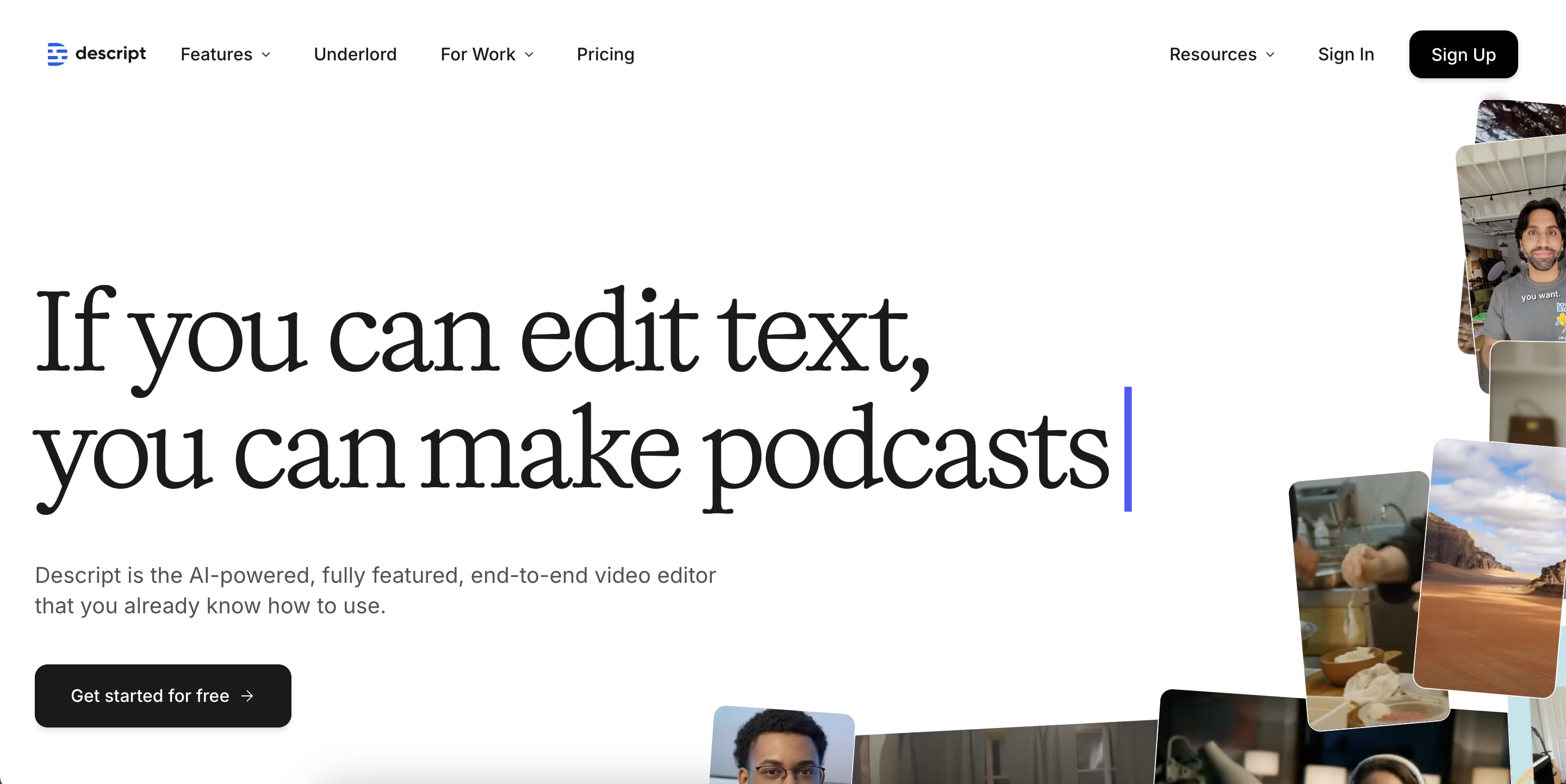
5. Descript
Descript text-to-speech API can also create high-quality voice synthesis. It offers lifelike voice cloning to create speech that closely resembles natural human voices. With Descript, you will get realistic audio output with customizable options.
Moreover, it offers multiple natural-sounding voices with adjustable pitch and tone. You can use it to handle complex speech patterns even without any inaccuracy. Its flexible output formats make it suitable for different applications. But keep in mind that Descript is not user-friendly.

6. Murf AI
Last is Murf, another API with high-quality TTS capabilities. Murf AI is one of the most flexible and scalable options. The API supports multiple languages and voice styles to create better-quality audio files. Moreover, Murf AI can generate low-latency speech for smooth user interactions. The API handles large-scale requests efficiently. However, the language support is relatively low.
Conclusion
Statista revealed that the audio advertising market will reach $12.16 billion by 2025. Choosing the right speech conversion API will benefit many use cases. You will get high-quality audio files with utmost precision. Moreover, you do not need to worry about operational downtime or ineffective integrations.
Just make sure you consider all the parameters before choosing an AI voice API. This is where Speaktor comes into the picture. The platform will help you create accurate AI voiceovers with ease. Thanks to its intuitive and user-friendly dashboard, you can use this platform easily. So, try the Speaktor text-to-speech API today.
Frequently Asked Questions
Yes. There are various free TTS APIs available on the market. However, remember that the features are quite limited compared to the paid plans. Speaktor provides a free plan to test the features first and then transition to the paid plans.
Yes. ChatGPT has a text-to-speech feature that converts spoken words into audio formats. However, it does not offer advanced customization features, and its accuracy is also quite low. If you are looking for a more professional option, you should consider Speaktor.
Yes. IBM TTS has a Lite plan, which offers 10,000 characters monthly for free. After this saturation point, you must wait or choose a paid plan. This plan is good for users who plan to test the features first.
Google Text-to-Speech (TTS) API is not entirely free but offers a free tier. Under Google Cloud’s Free Tier, you get 4 million characters per month for standard voices and 1 million for WaveNet voices.

